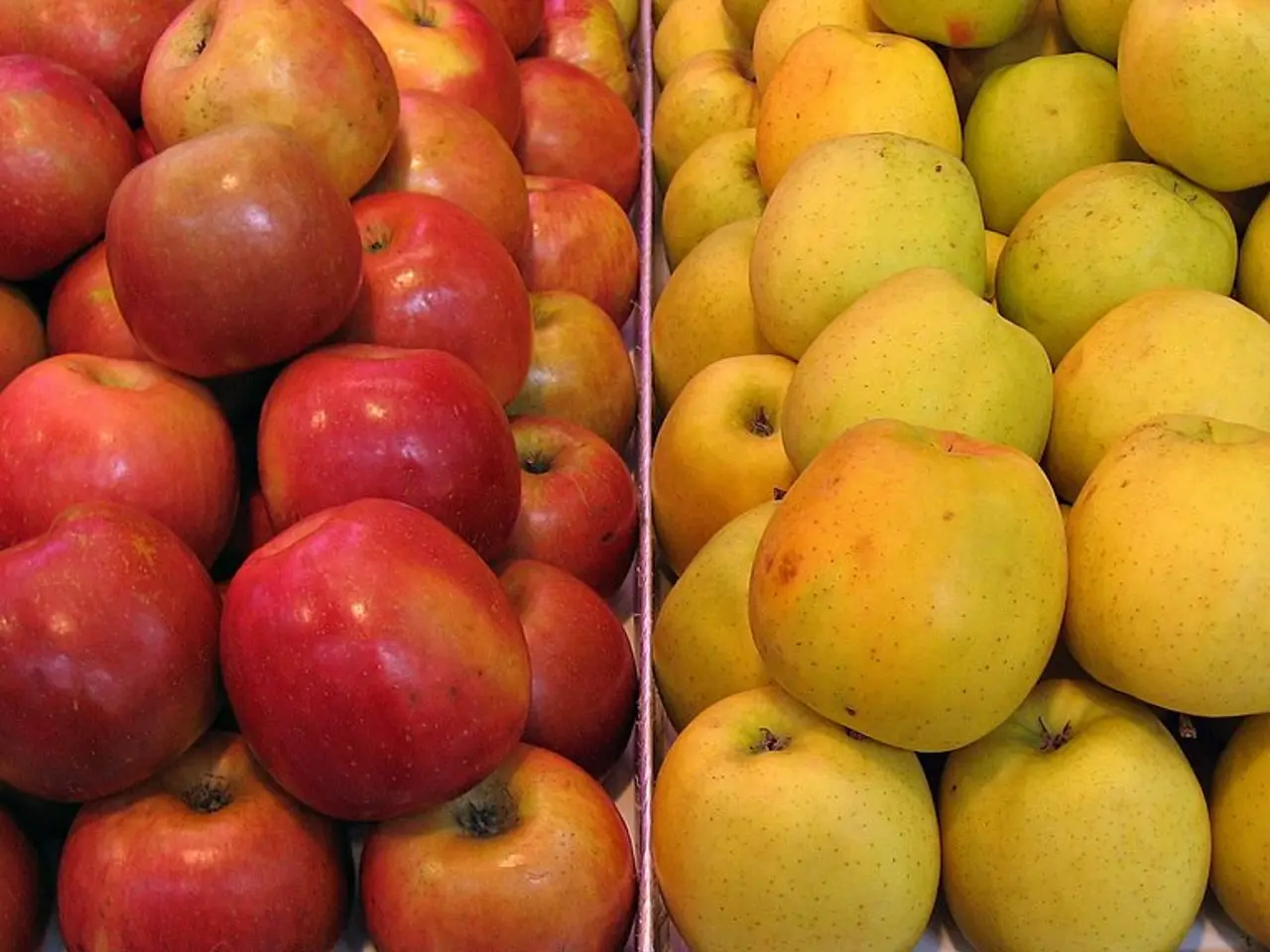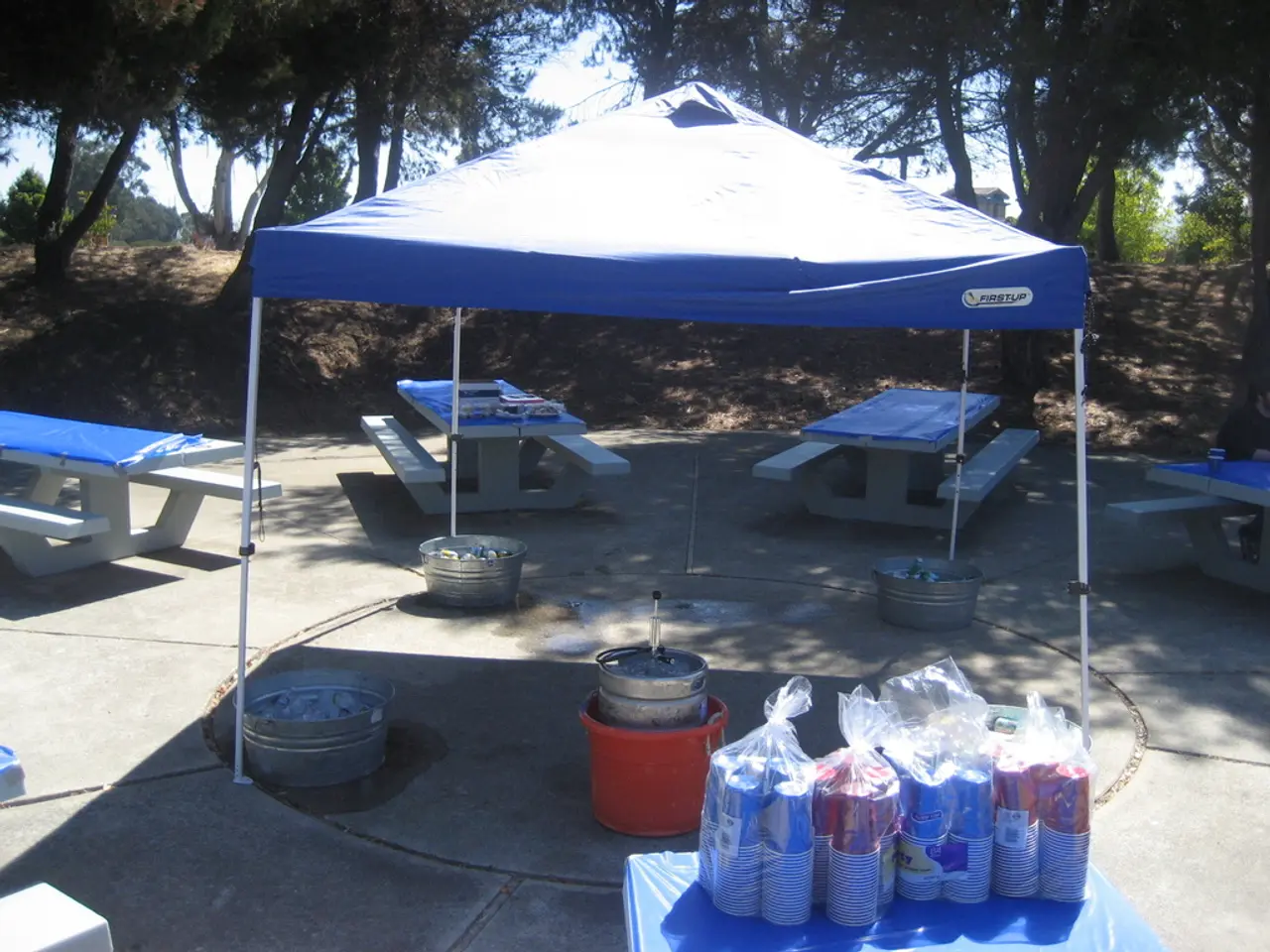Storing Apples: A Comprehensive Guide
Growing your own apples can be a rewarding experience, but storing them for the long winter months is crucial to ensure they remain fresh and delicious. Here are some tips and tricks to help you store your home-grown apples effectively.
Firstly, it's essential to avoid freezing apples when storing them short term, as this can damage the flesh and hasten their decline. Instead, store them in a cool, humid spot like a cellar or unheated garage, or in the fridge for up to a week in a clear freezer bag or paper bag.
When it comes to choosing the right apple variety for long-term storage, firmer, late-harvest types are your best bet. Common long-keeping varieties include Rome Beauty, Northern Spy, Arkansas Black, Cortland, Fuji, Granny Smith, Mutsu (Crispin), and Pink Lady (Cripps Pink). These varieties have thicker skins and denser flesh which slows spoilage and enzyme activity.
For long-term apple storage, the best conditions involve low temperatures (ideally between 32°F and 40°F / 0°C to 4°C) and high humidity, along with good ventilation to prevent spoilage and moisture loss. Controlled atmosphere storage, which regulates oxygen, carbon dioxide, and nitrogen levels besides temperature and humidity, allows apples to be stored much longer with minimal quality loss.
Storage methods include refrigeration for short to medium-term storage, root cellar or cold storage for 3-6 months, controlled atmosphere storage for many months, hydrocooling and forced-air cooling for rapid temperature reduction after harvest, and dehydration for very long-term preservation without refrigeration.
To maintain freshness, start with fresh, unblemished apples. Sort apples by variety and ripeness; store similar types together to avoid accelerated spoilage. Ensure good air circulation—stack apple boxes with spacing away from walls so fruit cools evenly. Avoid apples showing any signs of bruising or rot as they spoil others quickly. For home root cellar storage, keep apples in perforated plastic bags or crates to retain humidity but allow airflow.
In summary, long-term fresh apple storage requires cool (near freezing), humid (90-95% RH), well-ventilated, and often controlled atmosphere conditions with the right apple varieties. For non-refrigerated preservation, drying apples properly is an effective alternative. Controlled atmosphere storage is the commercial gold standard for keeping apples fresh through the winter.
For more information on juicing or pulping apples, you can refer to our roundup of the best apple presses. For guidance on freezing apples, we recommend checking out BBC Good Food. Harvest apples with care to keep the stalk intact, as this can help prevent rotting. For a cheap alternative to apple racks, use an old filing tray, adding more layers as needed. Enjoy your fresh, home-grown apples all winter long!
Maintaining a proper lifestyle during winter months can include preserving your home-grown apples effectively for long-term consumption. Store your home-grown apples in a cellar, unheated garage, fridge, or root cellar, ensuring they remain at low temperatures and high humidity to maintain freshness.




